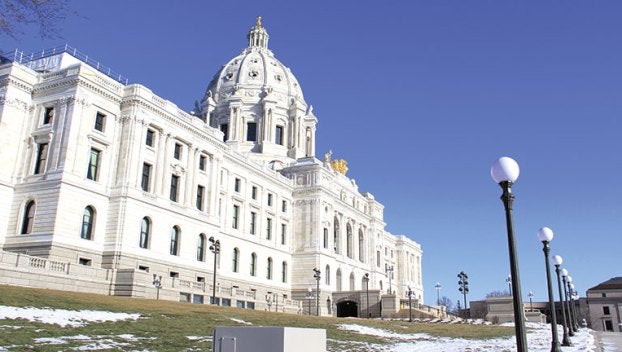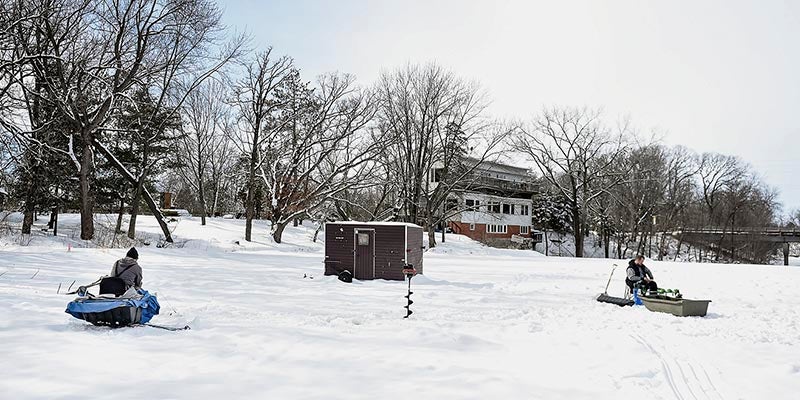Minnesota’s school resource officer debate could come to a head this week
Published 1:22 pm Monday, February 19, 2024
|
Getting your Trinity Audio player ready...
|
By Dana Ferguson
A proposed change to a law prohibiting prone restraints on Minnesota students is expected to make its final committee stops this week before landing on the House and Senate floors for a vote.
But it will continue to face fierce debate along the way.
While leaders of both political parties have said they’re eager to act quickly to pass a bill tweaking the 2023 policy change, they’ve not yet been able to strike an agreement that satisfies law enforcement, student advocates, educators and other interest groups.
The measure hit a snag last week when a House public safety committee pumped the brakes on the proposal. In an election year, it could be particularly tricky to thread the needle on the issue that reignites disagreements around policing across and within political parties.
Law enforcement groups say a change is key to bringing back school resource officers that were pulled last year out of concerns about the new student restraint law. Dozens of police departments terminated or suspended school resource officer contracts following the law change. There isn’t a firm count of how many districts had officers prior to the change and remain without them now.
Student and community advocacy groups, though, argue that the law should stand as is. And they say that approving exemptions for officers in schools could put students at risk.
Over the weekend, DFL lawmakers carrying the bill met with stakeholders and GOP legislators to consider wording that might build up broader support for the change.
What are lawmakers considering changing?
State lawmakers are considering a change to the law passed last year that bars school workers and resource officers from restraining students in a way that limits their ability to breathe or voice their distress.
The proposed tweak would give school resource officers extra latitude to use prone restraints if they’ve undergone specific training to work in a school setting. School staff would still be prohibited from using those holds.
Last year, lawmakers approved a change that bars school resource officers and staff from using any restraint that restricts a student’s ability to breathe or call out for help unless they pose an imminent threat of injury or death.
A similar law limiting prone holds on students with disabilities took effect in 2015. Lawmakers in 2021 prohibited correctional officers from using prone holds on incarcerated people in most situations.
Under the bill, schools would write specific policies spelling out when the holds would be allowed and those would be guided by a statewide model policy. Bill authors have said that the restraints couldn’t be used to discipline students, only to respond in cases where police intervention is necessary.
Officers who violate the policy would be subject to sanctions and other penalties.
Heading into the weekend, disagreements remained about how much flexibility to give officers to use holds that limit student breathing. The initial legislation set stricter parameters for situations where a hold would be allowed than what police groups wanted to see.
Both law enforcement and community groups voiced concerns about timelines to require training and roll out the model policy, as well as the proposal to put the Board of Peace Officer Standards and Training (POST Board) in control of the model policy drafting process.
What is the disagreement about the proposal?
Law enforcement groups have said the law prevents them from stepping in in situations where a student might be damaging school property or on the cusp of harming themselves or others. They pressed for clarification on when officers could use prone restraints but said many departments still have concerns about liability.
Imran Ali, general counsel for Minnesota Police and Peace Officers Association, told the House Public Safety Committee that school resource officers from around the state shared with him their concerns about the current law.
“Those that are out (of schools) want back in but are frightened under the current law and those that are in are also worried about what the future is with the law in flux,” he said last week. “This amendment solves that issue and would assuage concerns that SROs around the state would have.”
Several law enforcement officers said the policy should be written to let officers use their discretion in situations where they might use a hold, rather than the current change that spells out that they can only use the holds in certain situations.
They also said that a 2021 change to policing laws already bars them from using prone holds and other restraints that affect breathing. The groups called for a later deadline for officers to undergo specific training.
Around 28 percent of Minnesota schools worked with school resource officers ahead of the law change, according to a Department of Public Safety survey. Half of those officers worked in the Twin Cities metro and half in Greater Minnesota.
On the opposite side, groups of student advocates, community groups, disability advocates and others have said the current law should be allowed to stand as is. Khulia Pringle, a parent and former teacher, helped pass the law barring student restraints last year.
“We never thought we would be down this road where the powers that be want the community to understand that somehow school resource officers cannot do their jobs without being able to use tactics that restrict the airways of children,” Pringle told the House panel. “Well, if we can help it, not on our watch.”
Opponents also raised concerns about expanding situations where an officer could restrain a student and said the change could put students of color and students with disabilities at particular risk.
In a report presented to the Legislature in 2022, the Minnesota Department of Education said it tracked more than 10,000 physical holds of students during the 2021-2022 school year. That is the most recent data available. The report did not elaborate on how many of those were prone holds or holds that impacted student breathing.
Does it have the votes to pass?
That is still uncertain. DFL legislative leaders have said they’re confident that the bill can move forward this week after workshopping the wording over the weekend.
But it’s not clear whether DFL authors will aim to appeal to Republicans to pick up votes or try to make changes limiting situations where the holds are allowed to win over the far left flank of the Democratic caucuses.
Both House Speaker Melissa Hortman, DFL-Brooklyn Park, and Senate Majority Leader Erin Murphy, DFL-St. Paul, said they hoped to pick up Republican votes but didn’t say whether they’d be necessary to get the bill to the governor’s desk.
“I think there’s a good compromise brewing between members of the community who are appropriately saying, ‘Think about how people deliver punishment in our schools,’ and law enforcement who says, ‘Yes, but we had this whole training regiment, we have a standard that is a very high standard,” Hortman told Politics Friday. “I think we’re getting there.”
Gov. Tim Walz has said he hopes that lawmakers can reach a compromise that can keep students safe and bring school resource officers back to districts where they’ve been pulled out.
“We want safe schools, we want our students to be in a place where they feel safe. And should we need to use some type of restraints, use the least amount possible and have a clear path and understanding of what those look like,” he told MPR News and Axios last week.
Where does the bill go next?
The proposal is slated for a hearing in the House Public Safety Committee for a vote on Tuesday. The Senate Judiciary and Public Safety Committee canceled a committee hearing Monday out of respect for three first responders killed in a shooting incident in Burnsville on Sunday. It wasn’t immediately clear when the panel would take up the bill.
Once the measure works through the committees, it could come up for a floor vote in either chamber within a matter of days.






